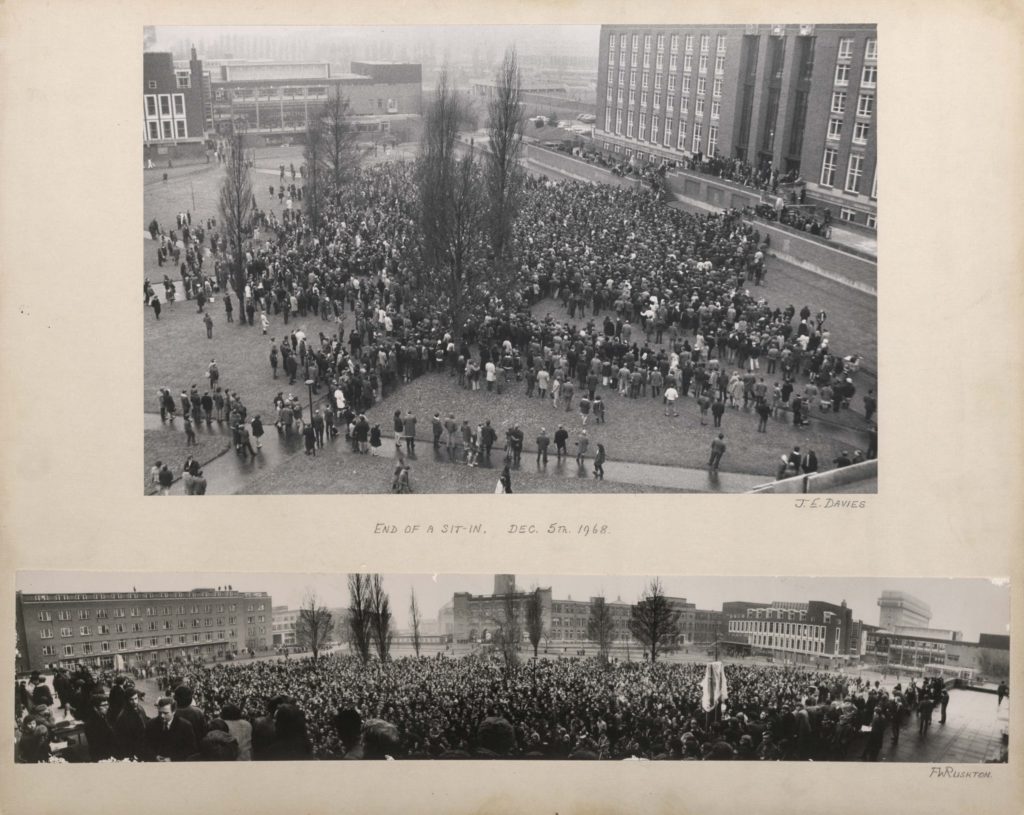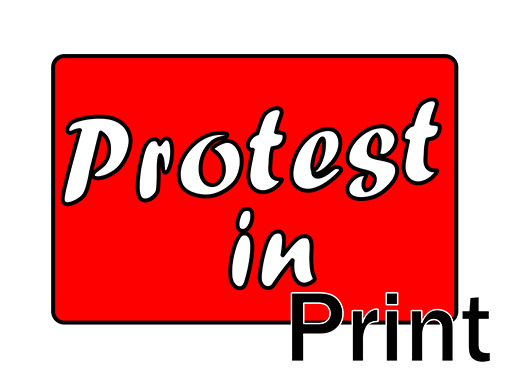The opportunity to be involved in the administration, research, writing and production of this project has been both rewarding and eye-opening.
Presented during the period which marks 50 years since the protests of 1968-70, it is interesting to observe the ways in which problems and restrictions in academic and public life have either remained or been overcome in this period. I found it compelling to reflect on the fact that current fractures in society, with the European, American and Australian shift to the Right, the recent teachers’ union strikes in the UK, the Extinction Rebellion campaigns and the louder liberal anti-war voice during recent Middle Eastern conflicts, can find parallels from circumstances five decades earlier and to use events from the 1960s protests as examples of potential consequences of an increasingly bipartisan society in 2020.
At the beginning of the project I was unfamiliar with all of the events in the period of ‘Protest in Print’ and, as I researched further and on a broader geopolitical scale, it became apparent that similar catalysts were igniting protest across all types of spheres and all around the globe.
As well as the simultaneous tumult caused by the protests, uprisings, revolts and revolutions on five continents, I was intrigued by the organisation, dedication and innovation with which protesters turned their protest into print and with the ways in which the worlds of Academia and Education revealed how intrinsically connected they are to ‘outside’ events – despite occasional comment to the contrary.

It was particularly interesting to review the variety of written, diagrammatic, hand-typed and mass-published material and to consider how much things have since changed, in the present-day world of the Internet, the global classroom and social media. With regards to this, I was led to ponder whether print and the erstwhile notion of ‘underground’ resistance might actually have been more effective and eye-catching in their attempts to generate awareness, show frustrations and garner support, despite being visible on a smaller and more local scale. My own conclusion is that History reveals this to have been the case, since such widespread and seemingly eclectic protest in journals, reviews, publications and protest marches did join up and begin to shape a world in which differing opinions could be expressed and in which the barriers of post-classist economic and political strata and hierarchy could be breached by both those studying society and those oppressed by it.
I am grateful to Dr. Emma Wagstaff for the opportunity to be involved and to lead on research for global areas such as the Americas and East Asia.
Niven Whatley MA (Hons), PgCE, QTS, TLOD [PhD Researcher in Hispanics, Uni. Of Birmingham].
Director of Faculty Room Limited.
07966 574 527
The opinions expressed are those of the author.
